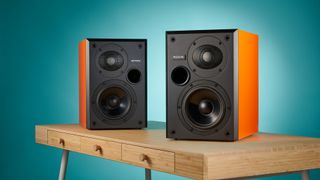A good pair of bookshelf speakers – or standmount speakers, as they're also known – is essential for your hi-fi system. Whether you're looking for an ultra-budget model for a modest microsystem, a premium speaker for your hi-fi separates system or even a pair of TV speakers, there is a wealth of bookshelf speakers to choose from today.
Why are they called 'bookshelf speakers'? Because many of them are compact enough to fit into a bookshelf, in a corner, or even on your desk. However, a bookshelf isn't necessarily where you should put them; we would always recommend placing them on dedicated speaker stands to ensure they sound their best.
Larger speakers might give you a bigger, more powerful sound, but not everyone has the space, budget or inclination for a set of floorstanders. Thankfully, a smaller set of bookshelf speakers can give you an amazing listening experience too, while also fitting into most spaces. The best bookshelf speakers offer clear detail, agile rhythms, engaging dynamics, a good balance and a decent helping of bass, even despite their small dimensions. We also expect good build quality that will last for years (if not decades), while our expectations of how subtle, transparency and precise the sound quality is go up as the price tag gets higher.
What Hi-Fi? has been testing bookshelf speakers for nearly 50 years, with our in-house team of expert reviewers having tested speakers in all sizes, types and price points – so you can trust our reviews and recommendations. You can read more about how we test bookshelf speakers below, but rest assured every speaker recommended below represents the best sound-per-pound performance for your listening needs and budget.
The quick list
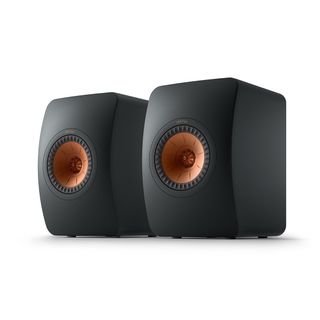
KEF has taken an excellent speaker and made it even better with its innovative Metamaterial tech. The LS50 Meta are class leaders at this level, and the best all-rounders for most people.
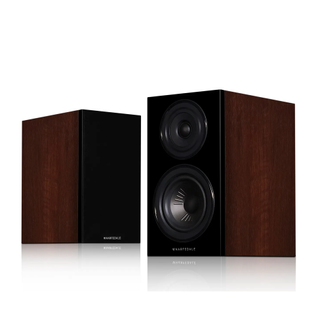
The cheapest pair on this list, these friendly Diamonds are wonderfully composed, refined and controlled compared with similarly priced rivals.
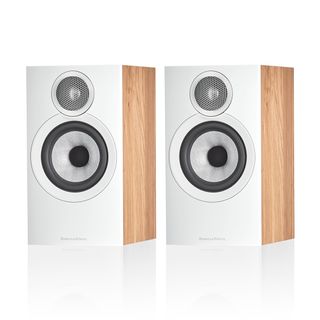
B&W’s entry-level 607 S3 speakers win us over with a clean, refined and detailed sound that’s so entertaining. Those with smaller listening rooms should look no further.
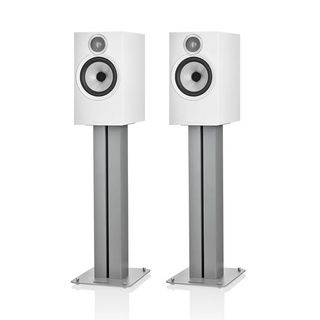
With improvements throughout, the 606 S3 are pleasingly large-scaled, spacious and refined performers for the money.
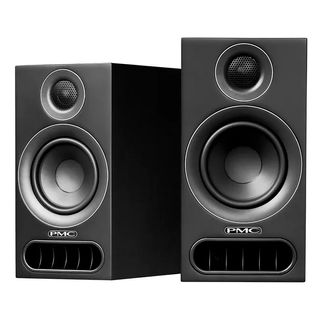
Prodigy by name... these standmounts might be entry level by PMC's standards, but they sound nothing short of superb, especially given their modest size.
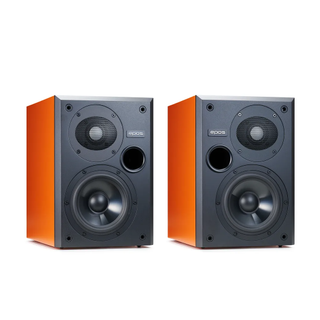
Petite premium speakers that are hugely talented and flexible to accommodate, especially inside a bookshelf.
Load the next product… ↓
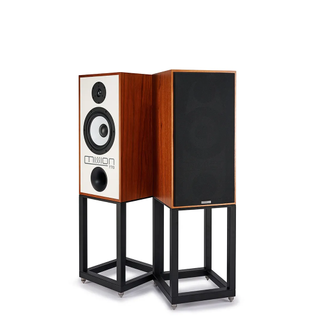
Mission’s resurrected 770 offer an excellent alternative to the established class leaders. They fill a large room with aplomb.
Recent updates
1st November 2024: We've added Wharfedale Diamond 12.1 and Epos ES-7N to the main list and there are more Also Consider options. All 2024 What Hi-Fi? Award winners are labelled.

I have been at What Hi-Fi? for over 10 years, and in that time I have reviewed countless stereo speakers, from budget bookshelves to upmarket floorstanders, and had the privilege of seeing the market continually push the envelope to produce better-sounding models. In this list, I've chosen the current What Hi-Fi? Award-winning, class-leading crop of bookshelf speakers across a wide range of prices, each representing the pinnacle of sound quality and design available at their respective price levels.
Best bookshelf speakers overall
The KEF LS50 Meta are one of our most-recommended speakers, offering incredible performance for the money. They may not look too different from the previous-gen standard LS50, and in many ways they aren’t. The brand decided not to change the beautifully made enclosure as it discovered that little could be improved – we agree, it's a high-quality, well-built speaker.
The one area that KEF decided needed improvement was the LS50’s iconic Uni-Q driver array, where the tweeter sits in the throat of the mid/bass unit. This has been thoroughly reworked, taking in all the refinements that KEF has developed over the past eight years and adding something new in the form of Metamaterial Absorption Technology (MAT) – KEF’s way of coping with the sound that comes off the back of the 25mm aluminium tweeter dome.
It doesn’t take long to realise that these LS50 Meta speakers are hugely improved, with a newfound level of clarity and finesse the originals only hinted at. Which makes them superb all-rounders. They sound smooth and balanced, with the new Meta technology proving its worth with stunningly clear and sophisticated high frequencies. Punchy bass, nuanced dynamics and sure-footed timing all coalesce to deliver a terrific performance.
We said in our review: "Large-scale dynamics are handled well and there’s a good amount of muscle for a speaker of this size. These are refined and composed performers that rarely sound stressed unless volume levels are high." They are superb all-rounders that work nicely with a variety of partnering amplifiers.
Read the full KEF LS50 Meta review
Best cheap bookshelf speakers
Wharfedale's Diamond range of speakers has always had one mission: to offer top class sound at an affordable price. Over 40 years on, it continues to succeed in its mission. The current Diamond 12.1 standmounters are a more sophisticated design with updates throughout, from drive units to cabinet construction, but these speakers remain as recommendable as when we first reviewed them in 2020.
It says volumes about the 12.1's staying power – and unmoving price tag, which is rare these days – that nearly five years on, we are still of the opinion that these budget bookshelf speakers have such a "broad spread of abilities that will help them get the most from price-compatible electronics and deserve a place high on your shortlist."
Even for its ultra-affordable price, the Diamonds are built to a pleasingly good quality. It's a neat and compact box – standing just 31cm tall, it won’t dominate any room. The two-way design features rear-firing reflex port, rather than the downward-facing design used in previous models.
The Diamond 12.1 have a bold, full-bodied presentation with ample detail on show. The speakers sound composed and refined too, qualities that are rather unusual at this budget end of the spectrum. They deliver more authority and scale than their modest price and size suggest, too, and while we don't expect bone-shaking bass from small boxes, low-end notes sound full and dig deep enough to satisfy at this level.
Overall these speakers have a smooth tonal balance and a forgiving nature, but they have just enough bite and convincingly communicate the shifts in dynamics to keep you drawn to the music. They deliver strong rhythmic punch and are able to reveal subtleties in detail, too.
At this budget price, the Diamonds have faced serious competition from some excellent affordable speakers. We're still big fans of the expressive and agile Dali Spektor 2, while the multi-Award-winning Elac Debut B5.2 offers just a bit more rhythmic prowess and transparency. This Elac model has been discontinued, however, leaving the door open for the Wharfedale Diamond 12.1 to emerge as budget favourites with their easy-going nature that will partner well with most components.. You won't get a more crowd-pleasing performance at this level.
Read the full Wharfedale Diamond 12.1 review
Best bookshelf speakers for small rooms
Now in its eighth generation and going 20+ years strong, Bowers & Wilkins' 600 series of speakers has more often than not provided some superb speakers.
And that story continues with its latest entry-level 607 S3 speakers. The smallest and most affordable stereo speaker that B&W makes (even if that 'budget' price has increased in the last couple of years), the new 607 S3 replaces the previous Award-winning 607 S2 Anniversary Edition speakers and delivers a significantly improved performance.
The 607 S3 has been updated throughout, with a brand new 25mm titanium decoupled double dome tweeter, a new elongated tube loading system, a revised motor assembly for the 13cm Continuum mid/bass driver, higher-quality components used in the crossover, and sturdier cabinet bracing. The two drivers overlap to improve integration, while the use of titanium means more refined and detailed high frequencies.
The footprint remains the same and they're ideal for smaller spaces. Partner them carefully to balance out a somewhat forward, excitable treble performance, and you'll be rewarded with a terrifically detailed, rhythmically cohesive, agile, and energetic sound. The overall presentation is more open-sounding than before, while the treble performance is so much sweeter and more refined. For their size and price level, each note lands with precision and they even hold dynamic interest at low volume. Basslines are pulled taut and while they don’t go as bone-shatteringly deep as bigger speakers (or as big as the bigger 606 S3, below), they do land with impact. Overall, they're just incredibly fun to listen to.
As we mentioned in our review: "Songs we know well and play every time during reviewing – Alt-J’s Breezeblocks, Bruce Springsteen’s Terry’s Song, John Williams’ Jurassic Park theme – are all given a zest of life through these talented speakers. They sound rhythmically cohesive, agile, and well-organised."
You should also consider the Triangle Borea BR03. For their size, they pack an immense sense of scale, making them ideal for filling smaller rooms. But their slightly peaky treble and divisive aesthetic means we prefer the B&Ws.
Read the full Bowers & Wilkins 607 S3 review

Both these and their larger 606 S3 siblings (below) are class leaders in their fields, but I find the 607 S3 represent the true sweet spot of the 600 Series, hence their Product of the Year gong in the What Hi-Fi? Awards standmount speaker category. I've come to expect great things from this entry-level 600 range due to its storied history, and the latest iteration hasn't let me down. I can't remember the last time I had as much fun testing compact speakers at this modest level. Just be aware that the B&W's enthusiastic character leads to a rather forward presentation, so you'll want to pair it with a more balanced-sounding amplifier for optimum results.
Best mid-price bookshelf speakers
The 606 S3 are the bigger standmounters in B&W's latest 600 S3 range of speakers, and they're bigger, bolder and pricier than the younger sibling, the 607 S3 speakers (above).
The 606 S3 takes on from the previous generation's 606 S2 Anniversary Edition (also Award winners) with improvements and updates throughout. They're furnished with the same upgrades as the 607, from the new titanium tweeter to the revised speaker terminal layout around the back. The two-way configuration, the same well-made build quality and finishes and the same dimensions return, but the 606 S3 are yet another step up in sound quality.
Unlike the peppy, fun character of the 607 S3, the 606 S3 offer a more mature presentation. There are newfound levels of refinement and openness compared with the older S2 model, with a spacious-sounding presentation and ample headroom for that cleaner treble to soar. Meanwhile, that bigger 16.5cm mid/bass driver and deeper cabinet result in added weight, punch and authority.
This extra bass power means the 606 S3 speakers aren’t quite as prone to the slightly excitable and forward treble of its lively 607 S3 sibling, but the older siblings' more level-headed, staid character comes at the expense of that charming and immediately entertaining sound we like so much in the new 607 S3.
While the 606 aren’t slouches when it comes to attack and agility, we find they don’t hold songs together as cohesively as when played through the enthusiastic 607. But this didn't stop us from enjoying the speakers, as we said said in our original review: "Did we have any trouble playing albums continuously without getting bored through the 606? Absolutely not. The pristine, capable nature of these new standmounters is still very impressive and they are a big, easy listen."
If you can afford and accommodate a step up above the compact 607 S3 speakers, want a larger scale of sound and need more oomph to your bass, the B&W 606 S3 will be to your liking.
Read the full Bowers & Wilkins 606 S3 review
Best bookshelf speakers for audiophiles
These might be PMC's entry-level standmounts, but they sound anything but (and they're not exactly cheap, either). That's hardly surprising – they're measured and listened to alongside the firm's reference models, and feature the same 27mm soft dome tweeter and 13cm mid/bass driver taken from models further up the company’s line.
They also feature Laminair – the aerodynamic port which was first developed for the flagship QB-1 studio monitors. This smooths the passage of air exiting the speaker to minimise airflow noise and improve bass definition.
The design is pleasingly minimalist, though it lacks some of the high-end polish of PMC's pricier models. But sonically, they're stunning, boasting excellent detail, clarity and charisma. The midrange is full of dynamic expression and solidity, and the bass digs deep without losing definition. Low frequencies have pace and punch to complement that impressive presence and depth, too.
As we said in our review: "Play Anohni And The Johnsons’ It’s My Fault from the collective’s latest album, and the Prodigy’s midrange talents come to the fore once more. There’s substance behind her vocal delivery, and a very honest rawness that conveys her grief and guilt around her complicity with how humanity has “broke the earth”. Emotion pours out of her mouth and the PMCs do well to communicate it."
While the Prodigy 1’s talents in precision and organisation mean we would veer towards calling them ‘analytical’, the speakers aren’t informative at the expense of entertainment. Systematic, yes, but anything but soulless.
Read the full PMC Prodigy 1 review

When I first laid eyes on the Prodigy 1, I wasn't exactly blown away; they looked pretty plain and much cheaper than the similarly priced KEF LS50 Meta (above). But this is a classic case of how looks can be deceiving as within just a few songs of testing I could tell they were something special. Indeed, they set the standards in detail and precision at this price, and certainly aren't slouches in the bass or musicality departments either. If you can afford these PMCs and are able to position them fairly near a rear wall, I'd recommend you audition them pronto.
Best premium bookshelf speakers
In complete contrast to our statement in the intro that speakers should never be placed inside a bookshelf if you want them to sound their best, Epos has made a pair of speakers that are very much optimised to sound good when placed inside a bookshelf.
The conventional recommendation is to place speakers a few inches or centimetres away from a wall, but that's not always practical in your space. Epos has made it so that their small but brilliant ES-7N speakers sound evenly balanced when placed up against the wall or inside a bookshelf. You can flip a switch at the back of the speaker unit to tell the speakers where they are placed and they will change modes accordingly. The speakers do sound their best out in the open on dedicated speaker stands, but it is impressive just how close to this performance they get when shoved inside a bookshelf unit (flick the switch down in this case).
There is a slight drop in clarity and stereo imaging, but it doesn't impact our enjoyment overall. In fact, even though these are small boxes that won't compete with larger designs – such as KEF's R3 Meta, which dig deeper into the bass and deliver a bigger, more expansive and dynamic sound – what these Epos speakers do so well with music gets us smiling with joy and our feet tapping as they deliver an incredibly capable performance.
As we said in our review: "The ES-7N are bold and confident performers that resolve high levels of detail and organise it in a cohesive and musical way. Play Kendrick Lamar’s Not Like Us and the Epos kick like a mule. They sound taut and punchy with music such as this, delivering the song’s jumpy rhythm track in a wonderfully surefooted manner. There is plenty of drive here and the speakers are great at conveying the music’s varying momentum."
Voices are delivered with impassioned nuance and clarity, and bass notes are – for small cabinets – taut, solid and grippy. We love the similarly-priced Neat Petite Classic's fun, peppy presentation, but the Epos are even more precise and controlled when it comes to rhythmic agility. They are just as considerate with more classical or intimate recordings, and they pair well with a variety of amplifier partners, from budget Rotels to premium Naims and beyond.
The Epos ES-7N are charming. They are small, hugely capable and surprisingly unfussy in use. That they recognise not everyone will be able to position their speakers perfectly and sound just as good when placed inside bookshelves is a rare talent that should be celebrated. If your budget can stretch this high, we can't recommend these enough.
Read the full Epos ES-7N review
Best bookshelf speakers for large rooms
We think these new Mission 770 are right up there with the very best at this price, and one of the best ways to fill a large room with sound. Mission takes design inspiration from the original 770 speakers launched in the 1970s, but has improved and modernised every other element: from the cabinet design to the drivers and even new dedicated stands.
While the retro link will be the main attraction for some, for us that’s put in the shade by the speakers' excellent all-round performance. The 770 have a range of sonic talents that sets them apart from most rivals and earns them a warm recommendation.
They have so much finesse when it comes to delivering extended bass. We said in our review: "As we listen to Massive Attack’s Angel, it’s the articulate way these speakers render the bass notes that stick in the mind. They sound taut and agile, but also delicate in the way they paint bass textures and resolve low-level information." There's plenty of punch and power, too. The speakers have a slightly forward balance, especially with the clear and expressive midrange, that sounds lively and engaging – but thankfully never too aggressive.
Songs are delivered with wide-ranging dynamics, impressive authority and scale. It’s a musically cohesive presentation that’s controlled and nicely organised. If you have the budget – and space – for these speakers, they're worth an audition.
Read the full Mission 770 review
Also consider
- Dali Spektor 2: These Dali speakers are a long-running favourite for their natural, nuanced way with voices, while fluid dynamics make them hugely appealing and entertaining to listen to. A great affordable bookshelf pair.
- Neat Petite Classic: These Neat speakers are terrific fun, with their precise, agile rhythms and solid, detailed sound winning us over – even though the very small cabinet size won't allow for truly deep bass or large-scaled sound. If you're after premium speakers for a small space, consider the Classic's peppy energy as an alternative to the Epos ES-7N.
- KEF R3 Meta: If you want greater refinement, expansive sound and deeper bass depth over the KEF LS50 or Epos ES-7N, these large KEF speakers are impressive performers, with huge leaps forward in clarity, transparency and authority.
- KEF Q Concerto Meta: This new KEF model is cheaper than the R3 Meta, but offers considerable low-end muscle, verve and authoritative scale than the more compact (yet more insightful and natural) LS50 Meta.
- Monitor Audio Studio 89: If you're after speakers with a slimmer profile but still deliver a big impact, these sleek new standmounts are worth a gander. They look striking, but they sound even more pristine: music comes through with amazing clarity, detail and even tonality. The Neats are more fun and exciting and the Epos more balanced, but the Studio 89 sound refined and polished.
- Epos ES14N: You'll need a large space to accommodate these odd-looking large standmounters, but they are mighty impressive when it comes to analysis, organisation and control. Low-level detail and dynamics are revealing, and the open, articulate way with voices is excellent. A little more rhythmic drive wouldn't go amiss, but we're big fans of the stunning clarity and cohesion on offer.
How to choose the best bookshelf speakers
Some bookshelf speakers demand a bit more space in order to perform at their best, so you need to decide what size and set-up you plan to have them in. Make sure you check the manufacturer's recommendations and speaker dimensions before buying, to ensure they will fit in the space you've marked out for them at home.
Our recommendation is that all of these speakers will benefit from being placed on a dedicated pair of speaker stands.
Budget and size are the biggest considerations. Whether your stereo speakers will be in your living room, home office or bedroom, it's crucial to see what fits your space – and what you can afford. Are you after a small, affordable pair that can go into the corner of your room? Are you after a large pair of bookshelf speakers, or have an extensive budget for premium standmounters? Whatever the case, remember to also factor in speaker cables and the demands of the rest of your hi-fi system.
As far as audio quality goes, it's definitely important to find a great-sounding pair of speakers, but how your speakers sound is naturally tied to what you're using to drive them. Building a hi-fi setup can quickly become complicated when there are thousands of different products out there, so if that's what you're doing, check out our ultimate guide to building the perfect hi-fi system.
How we test bookshelf speakers
At What Hi-Fi? we have state-of-the-art testing facilities where, as a team of audio experts, we review hundreds of products every year, including one of the most prolific hi-fi products of all – bookshelf speakers.
We judge products on a performance-per-pound basis, so during our testing we always compare products to similarly priced class leaders to help us settle on a star rating for the review and the order for these five-star performers in these buying guides. So when, for example, a new pair of £1000/$1000 standmounter arrives in our test rooms, we listen to it against the similarly priced KEF LS50 Meta and PMC Prodigy 1 on this list to see how it fares against those class leaders.
We often review bookshelf speakers by using them in at least two systems – our high-end reference system, to reveal the best they can sound when fed the most accurate signals, and a more price-comparable one to see how they perform in real-world scenarios with realistic partnering equipment. Our choice of test music is varied, too, to see how pairs sound when playing a variety of different genres and styles of music.
Whether we're reviewing a set of bookshelf speakers that cost a few hundred pounds or a fair few thousand, our review philosophy doesn't change, and you can be sure that any five-star speakers (and particularly What Hi-Fi? Award-winning ones) will offer up a fantastic performance for the price.
As a rule, no input from PR companies or sales teams is taken into account during reviews, maintaining What Hi-Fi?'s decades-long reputation for delivering honest, unbiased critical feedback.
You can read more about how we test and review products on What Hi-Fi? here.
F.A.Q
Where should bookshelf speakers be placed?
Despite their name and size, bookshelf speakers shouldn't be placed on a bookshelf. And certainly not on the floor. Their performance depends hugely on the quality of their support, and this is an area you shouldn’t compromise on. Ideally you should place them on dedicated speaker stands – especially if you've spent more than a few hundred on them – though if that isn't an option for you, try to put them on the most solid, rigid support possible. You should also consider how close to a wall they will work optimally at, or if they would benefit from being angled inwards at all.
You can read our how to set up and position your speakers in 4 simple steps for more guidance.
Are bookshelf speakers better than a soundbar? Are they good for a TV?
Stereo speakers can work just as well for TVs and movies as they can for music. You'll just need to connect your speakers to an amplifier that has the right connections to hook up a TV, which in most cases will be an optical or HDMI port, and position them flanking your television. Here's how to connect your speakers to your TV in more detail.
Their physical width will likely produce a more convincing stereo effect and room-filling sound than a soundbar, while the larger size of their drivers will typically deliver superior dynamic expression too. That said, soundbars often come with subwoofers that will invariably dig deeper in the bass than bookshelf speakers, and many of them nowadays are Dolby Atmos soundbars that can produce surround and height effects for greater immersion.
Are bookshelf speakers better than floorstanders?
This is where we'd point you to our bookshelf / standmounts vs floorstanders article, but the short answer is: it depends. If you're going to be using your speakers for movies as well as music, or are simply a fan of ample, deep bass, the larger cabinet is typically the way to go. That said, floorstanders don't always produce better quality bass, and engineers of bookshelf speakers are finding ways to offer more bass from a smaller cabinet.
Floorstanders generally require more space to breathe in, and you'll want to think about the size of the room your speakers will sit in, as well as your preferred loudness levels. If your living room is the size of a football pitch, are those compact bookshelf speakers really going to be able to fill it with high-volume sound?
Recent updates
- November 2024: Wharfedale Diamond 12.1 and Epos ES-7N have been added to the main list following their 2024 What Hi-Fi? Award wins. More options added to Also Consider section.
- August 2024: Added the five-star Monitor Audio Studio 89 to the Also Consider section.
- June 2024: Added an 'Also consider' section to offer more alternative buying options.
- January 2024: FAQ section added to help buyers in their decision to buy bookshelf speakers.
- November 2023: What Hi-Fi? Award winners labelled following the announcement of the 2023 What Hi-Fi? Awards Best Buys and Product of the Years.
MORE:
Looking for more options? Here are the best hi-fi speakers across all budgets
Prefer floorstanders? Check out our guide to the best floorstanding speakers for all budgets
